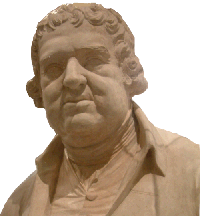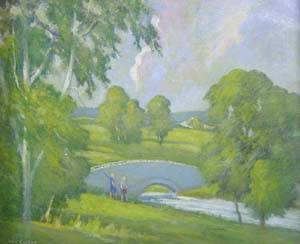W. J. Coffee facts for kids
William John Coffee (1774–1846) was a famous English artist and sculptor. He was known around the world for his amazing sculptures. He often worked with materials like porcelain, plaster, and terra cotta (a type of reddish-brown clay).
While he also painted with oil paints, he was most famous for his sculptures. Early in his career, he worked as a "modeller" (someone who creates models or molds) for William Duesbury. This was at a china factory in Derby, England. Later in his life, William John Coffee moved to America.
Contents
William John Coffee's Life and Artworks
William John Coffee worked for William Duesbury in Derby. He also worked at other places like Pinxton Porcelain and potteries in Derby and Church Gresley. During his time in Derby, Coffee created busts (sculptures of a person's head and shoulders). He made these for important local people and historical figures.
One famous bust he made was a life-size sculpture of Erasmus Darwin. This sculpture shows how skilled Coffee was at modelling. You can see it today at the Derby Museum.
Sculptures for Gardens and Hospitals
Coffee also made a terra cotta copy of the "Florentine Boar" in 1806. This was a sculpture of a wild pig. He also created several terra cotta statues of Greek figures. These statues represented medicine and healing. They were made for the garden of Joseph Strutt.
The Boar sculpture was later moved from Strutt's garden. It went to the Derby Arboretum, a park that Strutt gave to the town. Sadly, the original Boar was destroyed during World War II. But a new one has been put in its place.
Coffee also sculpted a very tall terra cotta statue of Asclepius. Asclepius was the Greek god of medicine. This statue was about 10 feet (3 meters) tall! It was made for William Strutt's Derbyshire Infirmary (a hospital). The statue was placed high up on a dome at the top of the new hospital building.
Moving to America and Famous Works
In 1816, William John Coffee moved from England to New York City. There, he became well-known for sculpting American historical figures. He made sculptures of important people like James Madison and Thomas Jefferson.
Coffee spent the last part of his life in Albany, New York. He received many "commissions" there. This means people hired him to create specific artworks. For example, he made two decorative plaques for the Albany City Hall around 1831.
He also created the fancy plaster decorations for Thomas Jefferson's house. He did similar work for the University of Virginia. Coffee also sculpted a statue of Winfield Scott. This statue was later used as a model for a picture of Scott on a U.S. Postage  that came out in 1870.
that came out in 1870.
See also
 In Spanish: William John Coffee para niños
In Spanish: William John Coffee para niños



